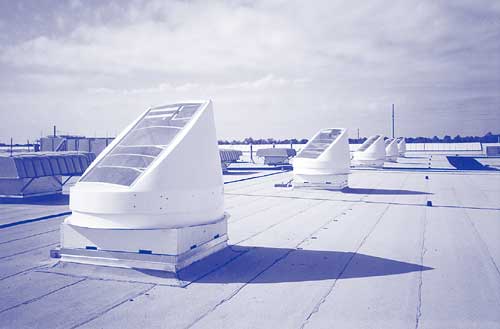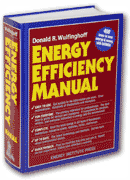Overview of…
Section 8: CONTROL AND USE OF SUNLIGHT
This Section of the Energy Efficiency Manual shows how to minimize the cooling cost that is caused by sunlight. It also shows you how to use solar energy for daylighting and passive solar heating.
The enormous amount of energy that falls on buildings in the form of sunlight is enough to satisfy all or most of a typical building’s energy requirement, in principle. At present, much of this potential is unavailable because of a lack of certain critical equipment, and because of the high cost of using available methods and materials.
However, a large fraction of this solar energy that could be tapped economically with current technology. The most glaring deficiency of modern architecture is failure to deal with this large energy source. On one hand, the beneficial use of sunlight is being neglected. On the other hand, careless architectural design allows too much uncontrolled sunlight into the building. The penalty paid by building owners for the first oversight is purchasing energy that could be obtained free. The penalty paid for the second oversight is purchasing still more energy to eject the unwanted solar energy.
Sunlight is a difficult energy source to harness. It is thinly distributed. It varies continuously in location and intensity. It is unavailable half the time, and it cannot be stored. Even during the daytime, it is unreliable. Using sunlight for one purpose, such as heating, may be difficult to reconcile with using sunlight for another purpose, such as lighting. As a result of these vexing characteristics, contemporary building design has thrown up its hands and ignored sunlight. Here you will learn to do better.
Nonetheless, a great deal of research and conceptual design relating to solar energy has been done, and there have been a few periods of intense commercial promotion. The applications of solar energy that are explained here deserve your attention in current and foreseeable building applications.
Click here to return to the Table of Contents


